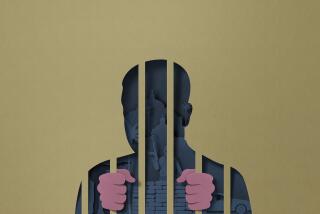BOOK REVIEWS : A Cocaine Runner With a Conscience
The Last Run by Kay Wolff and Sybil Taylor (Viking: $18.95; 344 pages).
As Colombia continues to be ravaged by its full-fledged cocaine war, it is interesting to recall traffickingâs somewhat humbler days.
Twenty years ago, cocaine still was considered a non-addictive drug in the United States. In Colombia, the magic powder was just another product in the time-honored business of contraband.
Today, of course, $1 million is pocket change to big-time traffickers, but in 1969, it was considered a respectable income for Colombian cocaine producers like Roberto Alvarez. His family processed 100 kilos a month, ran a furniture factory to conceal the drug for shipment, and managed a stable of 20 âmulesâ to hand-carry cocaine to Europe and the United States.
In âThe Last Run,â Kay Wolff and Sybil Taylor write of an American womanâs outlaw days as one of Alvarezâs mules and suitcase makers in his clandestine factory. Kayleen Wolff (a pseudonym) is a do-good drug dealer, a cocaine addict with a social conscience. She is the striking daughter of Okie immigrants to the San Joaquin Valley who learned to drive a forklift and went on to earn a masterâs in fine arts from UCLA. At 27, Kay made her way to Bogota in search of adventure and riches and, according to the book, she found both.
In a little more than a year, she suffers an earthquake and a plane crash, becomes addicted to cocaine and kicks the habit, and is forced to kill an intruder into her Bogota apartment. She cannot bear the sight of street waifs begging for money and finally adopts two of them just before a meeting of the Alvarez family in which the âgodfatherâ shoots his own brother-in-law, splattering his brains all over Kayâs arm and dress. When she screams and attempts to flee, he breaks her ribs.
True? Maybe, maybe not. Maybe there is a little embellishment here and there, but evidently there is some truth, too. The writing is uneven--sometimes flowing, sometimes stilted--but Kayâs story gives us a rare glimpse inside a Colombian drug family just as the cocaine business is taking off.
Kayâs entree into the Alvarez family is through Robertoâs son, Ricardo, a âyounger manâ of 19 or 20 whom she meets at a party and teaches to make love before buying a kilo of his pure cocaine. Kay turns the stash over to her friend and apparently sometime-lover, Maggie, her business partner who carries the cocaine to Los Angeles in a false-bottom suitcase.
When Ricardo discovers Kayâs skill in fabricating suitcases to conceal cocaine, he brings her to a lunch with Dad. She is accepted quickly into the Alvarez family and factory. (Too quickly? She is privy to an awful lot of information.) She moves into an apartment in one of Alvarezâs buildings and occasionally is asked to escort his mistress about town. A gringa among Latins, she is treated as something more than a woman but not quite a man.
Soon she is earning $10,000 a month from Alvarez, plus she and Maggie are claiming $50,000 with each run of their own. She also has a habit of two or three grams of pure coke a day.
The book describes now-obsolete techniques of smuggling.
Kay describes her delicate work on suitcases and furniture with her tool kit of C-clamps, needle-nose pliers, pinking shears, matte knives and casing glue. For the Alvarez family, she also carried cocaine to Europe--via Brazil to Portugal--and banked in the Cayman Islands, always in disguise, with fake passport and travel papers.
Half the smuggling business, she says, is waiting, and coping with your nerves while you wait. The other half seems to be the high of success, what she calls the terror of risk mixed with the elation of victory.
Despite the thrill, however, Kayâs â60s conscience bothers her. She hates the way the Alvarez family treats its servants, and the rat-packs of hungry children in the streets eat away at her. She gives them candy and coins and, as Ricardo is about to drop her for his family-picked bride, she brings two girls home. Her love for the street kids gives her the strength she needs to kick her cocaine habit. And when the godfather grows violent, she knows itâs time to go home.
The âlast runâ is Kayâs trip home smuggling her two adopted children through Costa Rica, Guatemala and Mexico into the United States. It is a touching part of the book.
Drug Enforcement Agency sources say they have never heard of Roberto Alvarez. In the epilogue of the book, Kay concedes that his name never appears among the famous drug lords written up in newspapers. She concludes that he must be dead.
Nonetheless, she says she has lived in fear for the last 20 years, always recalling the advice she received from an Alvarez: âThe world is a small place when a Colombian is looking for you.â
Miller, Mexico City bureau chief of The Times, has reported on the evolution of new drug routes in Central and South America.
More to Read
Sign up for our Book Club newsletter
Get the latest news, events and more from the Los Angeles Times Book Club, and help us get L.A. reading and talking.
You may occasionally receive promotional content from the Los Angeles Times.







